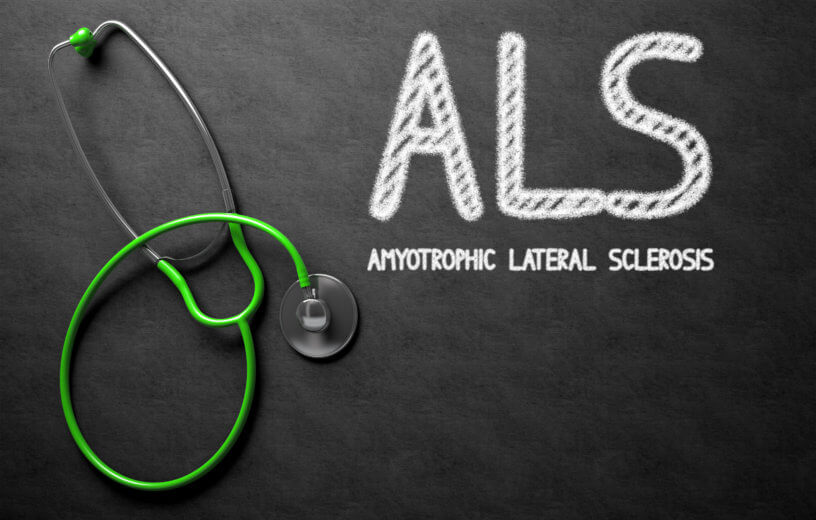LONDON — Scientists have made a breakthrough in the fight to cure amyotrophic lateral sclerosis, also called ALS or motor neuron disease. A team from the Francis Crick Institute and University College London says it’s possible to reverse one of the hallmark genetic traits of this disease, which leads to paralysis and death.
In 97 percent of ALS patients, an abnormal buildup of proteins occurs. These proteins help to regulate the body’s RNA in a motor neuron’s nucleus. When this happens, the excess proteins accumulate around the surrounding cytoplasm of these specialized nerve cells.
ALS progressively disrupts the body’s nerve cells in both the brain and spinal cord, causing loss of muscle control, an inability to move limbs, and eventually an inability to speak, eat, and breathe.
Currently, there is no cure for amyotrophic lateral sclerosis. In most cases, the disease becomes terminal within two to five years of diagnosis.
Blocking a key enzyme may open the door to treating ALS
In the first of two new studies, researchers used lab-grown motor neurons from the skin of ALS patients to try and reverse this protein buildup. Study authors note the patients donating these cells all had mutations in an enzyme called VCP, which only appear in one to two percent of familial cases of ALS. Overall, familial ALS accounts for only 10 percent of all worldwide cases of the disease.
By blocking the activity of this enzyme, scientists were able to reverse the unusual buildup of proteins around motor neurons. Moreover, the distribution of proteins in the body returned to their normal levels after inhibiting VCP.
“Demonstrating proof-of-concept for how a chemical can reverse one of the key hallmarks of ALS is incredibly exciting,” says Crick postdoctoral researcher and study author Jasmine Harley in a media release. “We showed this worked on three key RNA binding proteins, which is important as it suggests it could work on other disease phenotypes too.”
“More research is needed to investigate this further. We need to see if this might reverse other pathological hallmarks of ALS and also, in other ALS disease models.”
The findings appear in the journal Brain Communications.
What’s causing proteins to gather around nerve cells?
In the second study, appearing in the journal Brain, study authors investigated other sections of RNA which move towards the nucleus of nerve cells in patients with ALS. These extra sections, which scientists call intron-retaining transcripts, are typically cut off during a process called splicing. The study identified more than 100 different types of intron-retaining transcripts which collect around the cytoplasm of diseased cells.
“We were quite surprised about the number of different intron-retaining transcripts we found in cells with ALS, which exit the nucleus and enter the cytoplasm. We were not expecting to observe this to this degree,” says Giulia Tyzack, project research scientist in Crick’s Human Stem Cells and Neurodegeneration Laboratory.
“To imagine what’s going on here we can consider watching a movie at the cinema. Typically, we don’t expect to see adverts throughout the film, but, if something goes wrong these ads might start cropping up at odd and unexpected points. These retained introns are a little bit like these abnormal ad breaks,” study author Jacob Neeves explains.
The team believes these transcripts may be what’s attracting more proteins to gather around motor neurons in patients with ALS. They note that future studies will still need to confirm their conclusions.
“Together, our two papers show how laboratory science is furthering our understanding of such a complex and devastating disease and provides some reassurance that the development of effective treatments may be possible in the future,” says senior author Rickie Patani.

I have just been diagnosed with ALS Do you know how i can participate in a trial?
Father in law died at 72 ; his mother died at 42 ; my wife died at 69 ; my son died at 42 .All from ALS. Worried about my other daughter 53, my son 58,my two in grand daughters in early 30’s and two grand sons. They told me this was not hereitary . I do not believe them! [email protected]
how does one participate in trials?